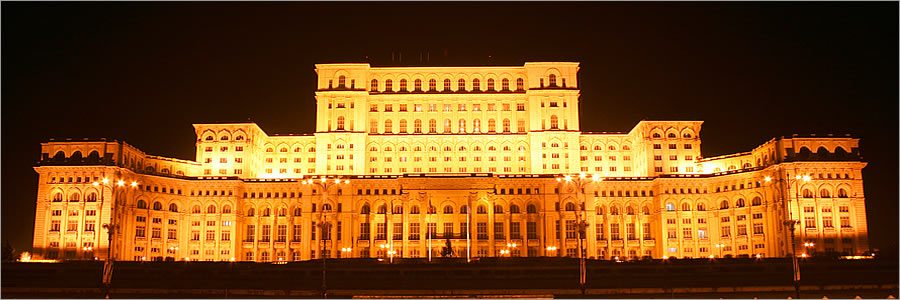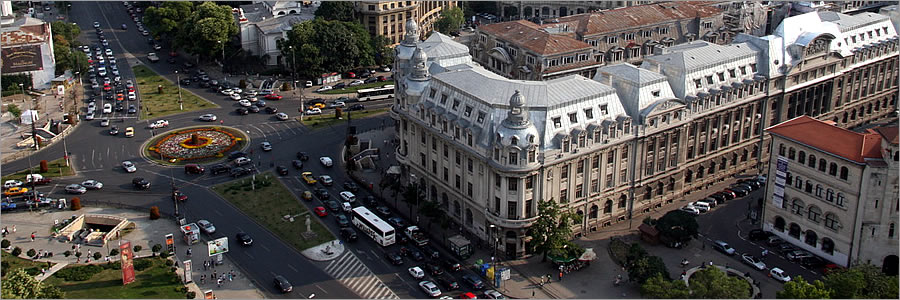
History - Bucharest
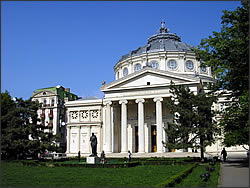 Bucharest (Romanian: Bucure?ti) is the capital city, cultural, industrial, and financial centre of Romania. It is the largest city in Romania, located in the southeast of the country, and lies on the banks of the Dâmbovi?a River. Bucharest was first mentioned in documents as early as 1459. Since then it has gone through a variety of changes, becoming the state capital of Romania in 1862 and steadily consolidating its position as the centre of the Romanian mass media, culture and arts.
Bucharest (Romanian: Bucure?ti) is the capital city, cultural, industrial, and financial centre of Romania. It is the largest city in Romania, located in the southeast of the country, and lies on the banks of the Dâmbovi?a River. Bucharest was first mentioned in documents as early as 1459. Since then it has gone through a variety of changes, becoming the state capital of Romania in 1862 and steadily consolidating its position as the centre of the Romanian mass media, culture and arts.
Its eclectic architecture is a mix of historical (neo-classical), interbellum (Bauhaus and Art Deco), Communist-era and modern. In the period between the two World Wars, the city's elegant architecture and the sophistication of its elite earned Bucharest the nickname of the "Little Paris of the East" (Micul Paris). Although many buildings and districts in the historic centre were damaged or destroyed by war, earthquakes and Nicolae Ceau?escu's program of systematization, many survived. In recent years, the city has been experiencing an economic and cultural boom.
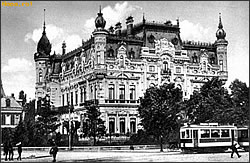 The name of Bucur has an uncertain origin: tradition connects the founding of Bucharest with the name of Bucur who was either a prince, an outlaw, a fisherman, a shepherd, or a hunter, according to different legends. In Romanian the word stem bucur means 'glad', 'joy'. In 1861, when Wallachia and Moldavia were united to form the Principality of Romania, Bucharest became the new nation's capital; in 1881, it became the political centre of the newly-proclaimed Kingdom of Romania. During Nicolae Ceau?escu's leadership (1965-1989), most of the historic part of the city was destroyed and replaced with Communist-style buildings, particularly high-rise apartment buildings.
The name of Bucur has an uncertain origin: tradition connects the founding of Bucharest with the name of Bucur who was either a prince, an outlaw, a fisherman, a shepherd, or a hunter, according to different legends. In Romanian the word stem bucur means 'glad', 'joy'. In 1861, when Wallachia and Moldavia were united to form the Principality of Romania, Bucharest became the new nation's capital; in 1881, it became the political centre of the newly-proclaimed Kingdom of Romania. During Nicolae Ceau?escu's leadership (1965-1989), most of the historic part of the city was destroyed and replaced with Communist-style buildings, particularly high-rise apartment buildings.
General information
Bucharest is situated on the banks of the Dâmbovi?a River, which flows into the Arge? River, a tributary of the Danube. Several lakes - the most important of which are Lake Herăstrău, Lake Floreasca, Lake Tei, and Lake Colentina - stretch across the city, along the Colentina River, a tributary of the Dâmbovi?a.
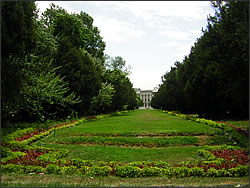 In addition, in the centre of the capital there is a small artificial lake - Lake Ci?migiu - surrounded by the Ci?migiu Gardens. The Ci?migiu Gardens have a rich history, being frequented by famous poets and writers. Opened in 1847 and based on the plans of German architect Carl F.W. Meyer, the gardens are currently the main recreational facility in the city centre. Besides Ci?migiu, Bucharest contains several other large parks and gardens, including Herăstrău Park and the Botanical Garden.
In addition, in the centre of the capital there is a small artificial lake - Lake Ci?migiu - surrounded by the Ci?migiu Gardens. The Ci?migiu Gardens have a rich history, being frequented by famous poets and writers. Opened in 1847 and based on the plans of German architect Carl F.W. Meyer, the gardens are currently the main recreational facility in the city centre. Besides Ci?migiu, Bucharest contains several other large parks and gardens, including Herăstrău Park and the Botanical Garden.
Herăstrău is a large public park located in the north of the city, around Lake Herăstrău, and the site of the Village Museum, while the Bucharest's botanical garden is the largest in Romania and contains over 10,000 species of plants, many of them exotic; it was once a pleasure park for the royal family.
Weather
Weather: Bucharest has a temperate-continental climate, with occasional excesses and differences in air temperature caused by the overheating of the city's streets. In the months of June to August the temperature climbs over 25°-30° Celsius (77°-86° Fahrenheit), while in winter it can drop to -10° Celsius (14° Fahrenheit).
More information can be found at:
http://www.bbc.co.uk/weather
romanian.wunderground.com
Bucharest Museums
- Art Museum: http://www.mnar.arts.ro/
- Popular Art Museum: http://www.muzeultaranuluiroman.ro/
- Village Museum: http://www.muzeul-satului.ro/
- Enescu Museum: http://www.muzeul-enescu.ro/
- Natural Science Museum: http://www.antipa.ro/
- Cotroceni Palace: http://www.muzeulcotroceni.ro/
Interesting things and other information regarding the surroundings
There are just too many interesting things and places to see and try in Bucharest to fit in just one list. Therefore we recommend the following sites as search base for additional information:
- Bucharest tourism: http://www.romaniatourism.com/bucharest.html
- Bucharest guide: http://www.romaniatourism.com/bucharest.html
- Bucharest travel guide: http://wikitravel.org/en/Bucharest
- Bucharest interactive map: http://www.salutbucuresti.ro/harta/?lang=en
- Bucharest events: http://www.sapteseri.ro/
- Bucharest events: http://www.afterhours.ro/
- Cotroceni Mall: http://www.aficotroceni.ro/
- Unirea Shoping Center: http://www.unireashop.ro/
